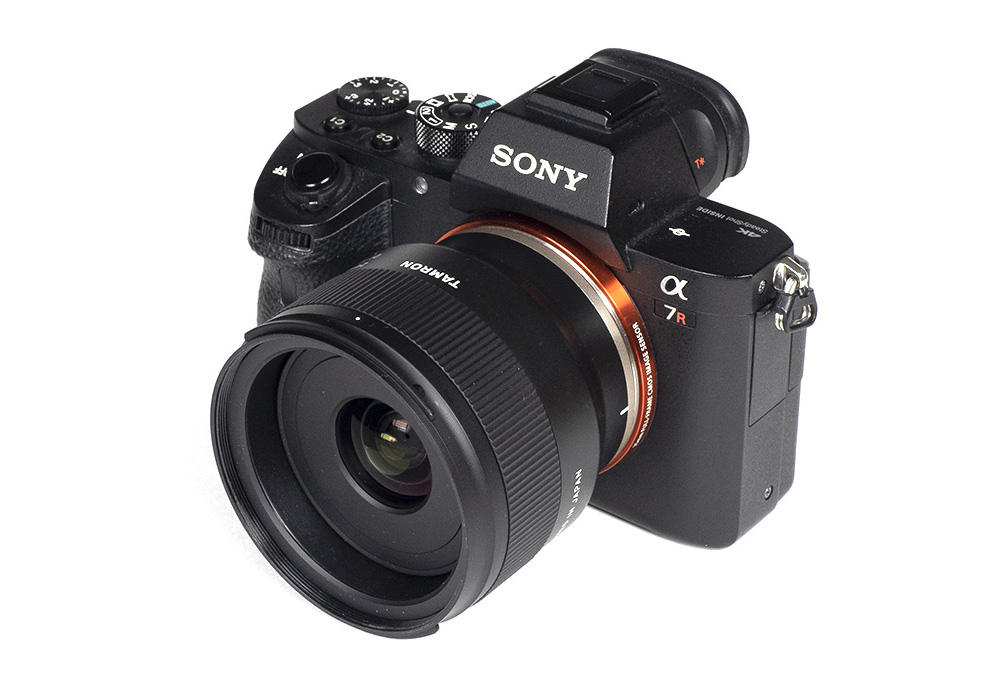by Klaus Schroiff, published August 2021
Introduction
Following our review of the Tamron 35mm f/2.8 Di III OSD M1:2, let’s go a little wider with the Tamron 24mm f/2.8 Di III OSD M1:2 – thus a moderate ultra-wide angle lens with typical applications such as street photography or landscapes. Other than its optical design and name, it is basically indistinguishable from its two in-house cousins (with the third one being the 20mm f/2.8). And at least regarding its pricing that’s a good thing. At around 250 USD/EUR, it is among the most affordable prime lenses on the market.
For this amount of money, you can’t expect professional-grade build quality. The chassis is made of average quality plastics based on a metal mount. The rubberized focus ring operates smoothly but there is a cheap feel to it. Surprisingly, the lens has some seals making it moisture resistant albeit there isn’t a word about dust protection. While the length of the lens doesn’t change during focusing, there’s a moving inner lens tube. It isn’t fully clear why Tamron designed the lens to be relatively long because this tube is quite deeply recessed by about 1.5cm. One aspect that differs from the 35mm f/2.8 is the petal-shaped lens hood – which in turn is the same as the one used for the Tamron 20mm f/2.8 Di III OSD M1:2.

The AF system uses a linear extension system. Typical for this focusing type, the AF speed is on the slow side but it’s at least noiseless. The same can’t be said about the aperture mechanism. When stopped down, you can hear that the camera is opening/closing the aperture during focusing operations. Once again, this has a cheap feel to it. As usual, manual focusing works “by-wire”. A specialty of the lens is its close-focusing capability. It can focus down to a max object magnification of 1:2 (hence the M1:2 in the lens name). An image stabilizer has not been implemented which is hardly surprising given the price point.
Below is a family picture showing the 20mm f/2.8, 24mm f/2.8 and 35mm f/2.8.

| Specifications | |
|---|---|
| Optical construction | 10 elements in 9 groups inc. 1x aspherical and 3x LD elements |
| Number of aperture blades | 7 (rounded) |
| min. focus distance | 0.12m (max. magnification 1:2) |
| Dimensions | 64x73mmm |
| Weight | 215g |
| Filter size | 67mm |
| Hood | petal-shaped (bayonet mount, supplied) |
| Other features | dust & moisture resistant |
| Mount | Sony FE |
Distortion
One stark difference of the 24mm f/2.8 compared to the 35mm f/2.8 is the rather massive amount of produced barrel distortion. At more than 5%, we’d not recommend using this lens without image auto-correction really. Auto-correction works nicely as far as distortions are concerned but this comes at a toll for the corner resolution – more on this in our next review of the 20mm f/2.8 where the issue is even more pronounced.
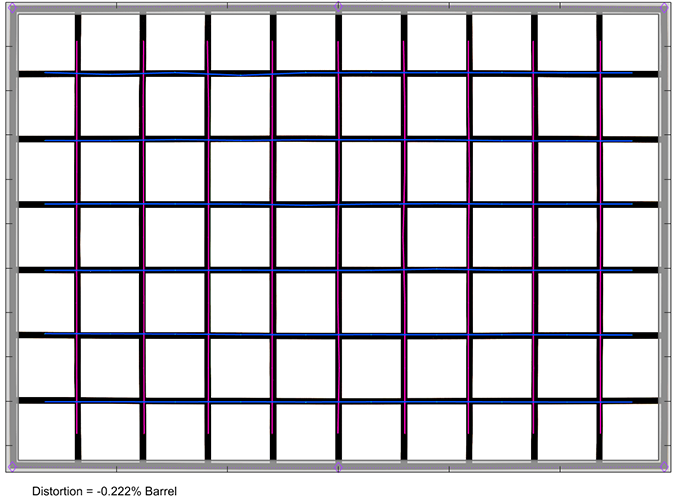
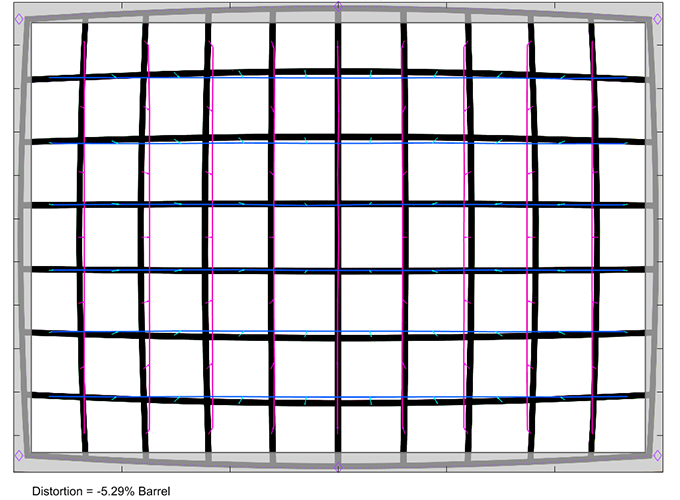
Vignetting
The vignetting characteristic is somewhat worse than average for a lens in this class. The light falloff is heavy at ~2.6EV (f-stops) @ f/2.8. Stopping down reduces the vignetting down to a minimum of about 1.5EV at f/8 which is a bit too much in our book.
Activated auto-correction reduces the issue substantially by 1.3EV (f-stops) at f/2.8. The remaining light falloff is still visible at f/2.8 but not drastic anymore. The vignetting is acceptable from f/4 in this case. As usual, we’d like to remind you that this comes at the expense of higher corner noise due to the signal amplification.

MTF (resolution)
Similar to the 35mm f/2.8, the Tamron 24mm f/2.8 is capable of delivering good sharpness at all relevant settings. This is especially true in the image center which is already superb at f/2.8 and beyond the resolution of the 42mp sensor used for testing. The near center is just slightly worse but still very good to excellent. The outer image field is pretty good, too. Stopping down results in a marginal overall improvement with a peak at f/5.6. As usual diffraction sets in from f/8. f/11 remains pretty usable but you shouldn’t stop down any further (on a high megapixel camera). Please note, however, that these readings were taken off RAW images – with activated image auto-correction you can expect slightly softer results in corners.
The centering quality of the tested sample was good. Field curvature is not an issue.
Please note that the MTF results are not directly comparable across the different systems!
Below is a simplified summary of the formal findings. The chart shows line widths per picture height (LW/PH) which can be taken as a measure for sharpness. If you want to know more about the MTF50 figures you may check out the corresponding Imatest Explanations

Chromatic Aberrations (CAs)
Lateral CAs are fairly low with an average CA pixel width of around 1px at the image borders.
These CAs can be eliminated via auto-correction without a loss in image quality so it’s not really an important aspect anymore.

Bokeh
A 24mm f/2.8 doesn’t quality as overly fast by prime lens standards but you can achieve a decent amount of object isolation at shorter focus distances at least.
Out-of-focus highlights are circular in the center zone at f/2.8. The inner zone of the discs is a bit nervous but this is still better than average for such a wide-angle lens. There is only a bit of outlining at the edges. The circular shape is maintained at f/4 but the more edgy 7-blade aperture is getting very obvious from f/5.6 onward.

The following sample crop illustrates the focus transition towards the background – taken at f/2.8. The quality is quite decent for such a contrasty scene.

Sunstars
The Tamron lens produces fan-like sunstars as you can see below – taken at f/11.
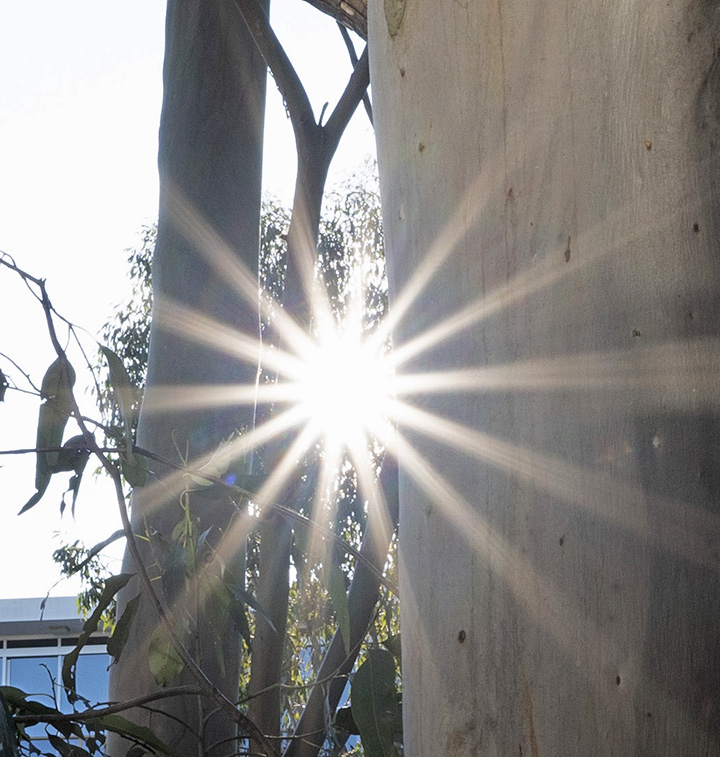
The circular shape is maintained in the broader center but “cat eyes” are obvious at the borders/corners. Stopped down to f/4 broadens the zone of perfectly circular discs but the outer image field has not improved yet. This is better at f/5.6 but the discs have transitioned to polygons by then.
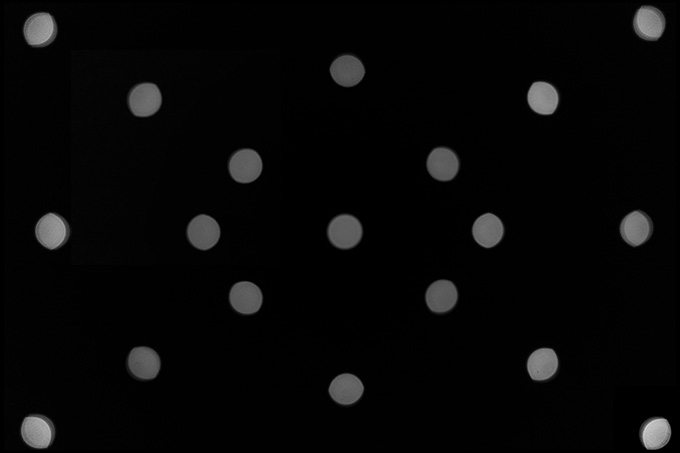
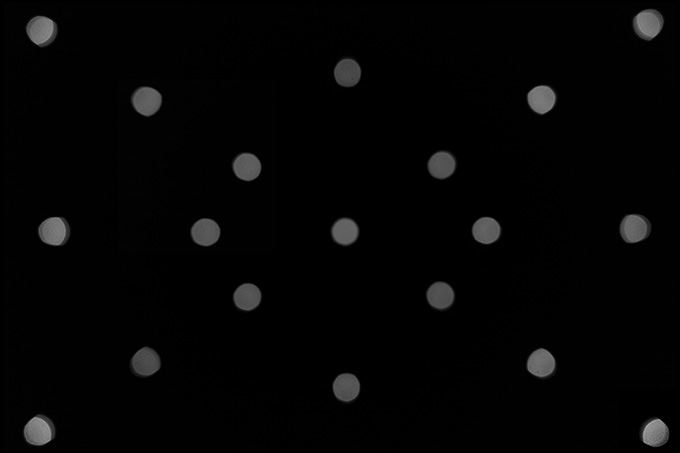

Competition
As so often in Sony E-mount, there are numerous alternatives available. The most obvious competitors in this budget segment are the Samyang AF 24mm f/2.8 (shown in the center below) and the Sigma 24mm f/3.5 DN Contemporary Series I (to the right) – neither of which we have tested so far. The Samyang (shown with lens hood just like the Sigma) clearly wins in terms of size – it is just tiny. The more expensive Sigma lens is quite a bit posher regarding its build quality. Performance-wise there shouldn’t be much between them though. Expect the Sigma to be much faster in terms of AF though.

Visual comparison courtesy of camerasize.com.
The Tamron 24mm f/2.8 Di III OSD M1:2 stays a bit short of the optical quality that we have seen from the Tamron 35mm f/2.8 Di III OSD M1:2 but it's still a very sharp lens. The center quality is absolutely superb. The outer image field shows no weakness even at f/2.8 but it stays short of exciting results even when stopped down. However, there's a caveat. Image auto-correction does reduce the corner quality due to a rather excessive amount of barrel distortion. We'll elaborate on this more in the next review. While you will see somewhat softer corners, the lens has still enough potential for maintaining a good quality in the outer image field though. CAs are quite low and usually not an issue even in RAW images. The vignetting is heavy at large apertures unless you activate image auto-correction. The Tamron lens is not the fastest prime lens around but you can achieve a decent amount of object separation at close focus distances. The rendering of out-of-focus highlights is decent for a moderate ultra-wide prime lens.
The build quality has to be seen in the context of the price tag. Obviously, it is a consumer-grade lens so don't expect wonders in this respect. The use of plastics is perfectly fine but they have a rather mediocre feel to them. The rather sluggish AF doesn't help with the subjective quality perception. On the positive side, the lens features some degree of sealing against moisture. Macro photographers will also appreciate the close focus capabilities with an object magnification of up to 1:2.
While the Tamron 24mm f/2.8 Di III OSD M1:2 is a decent lens, it still feels like an answer to a question that nobody has asked. Most standard zoom lenses cover the 24mm setting and the speed and quality advantage of the Tamron lens is either marginal or non-existent. But … it's cheap.
-
Optical Quality
-
Build Quality
-
Price / Performance


